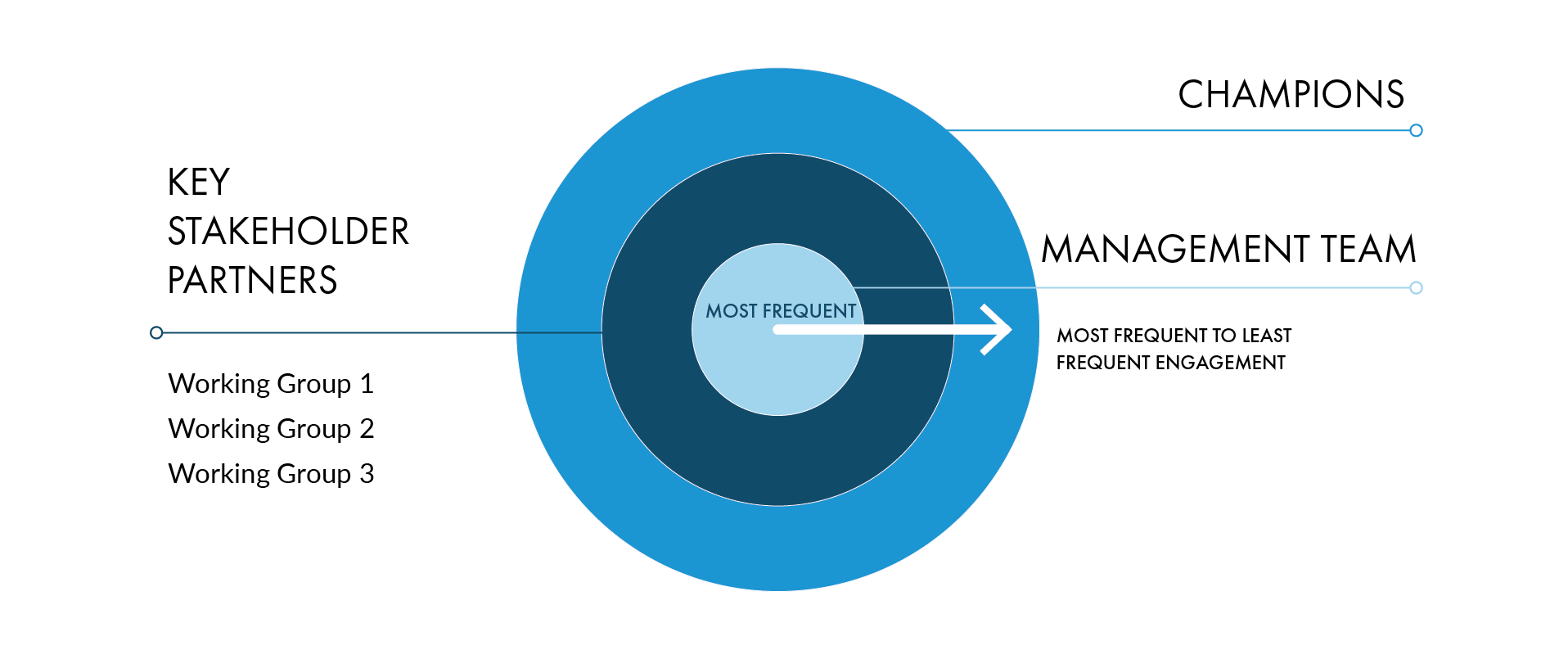Step 4: Build Your Coalition for Systems Change
Creating and sustaining the conditions for boosting people out of poverty requires an all-hands-on-deck approach.
Developing your own Mobility Action Plan (MAP) will require you to engage not only other government stakeholders but also external stakeholders whose unique perspectives on community challenges and work across the systems that hold poverty and inequity in place can help you identify and implement the right strategic actions. This is why one of our planning principles is partnerships with cross-sector actors across policy domains and why we’ve emphasized the roles of nonprofit, philanthropic, anchor institution, and private-sector partners throughout this guide. Indeed, one of the chief values of having external partners is that they can help ensure the work will continue beyond the span of a single county executive, council, or mayoral administration.
The fact that poverty persists in the US and that inequities continue to widen in many communities means significant reforms are necessary for reshaping the institutions and systems that affect residents’ lives. Bringing about systems change—a fundamental shift in practices, underlying values, or norms by local actors that reshapes policies, processes, funding, relationships, and power structures—requires partners to think, act, and collaborate differently than they may have before. Places that make only small program or policy adjustments but otherwise maintain the status quo will likely find their approach insufficient for truly boosting mobility from poverty. Of course, change for change’s sake is unlikely to win many allies, and it won’t necessarily boost mobility or advance equity. Systems change should be motivated by the fact that status quo policy approaches have not led to better outcomes for people or communities. Although not every partner will be committed to systems change, all should be invested in improving communities. With that in mind, partners in this work should be prepared to find common ground with organizations with differing ideas of what or how big changes should be.
This section offers a guide to building a cross-sector team capable of creating systems change and boosting mobility from poverty in your community. Moving forward, we’ll call the group responsible for executing the mobility action planning process (and some of the MAP strategic actions) the Mobility Coalition. Your Mobility Coalition should expect to spend anywhere from six months to two years on the Mobility Action Planning process (each county in the Upward Mobility Cohort spent between 18 and 21 months developing its MAP). The Mobility Coalition may also decide to keep meeting after the MAP has been released to continue coordinating around strategic action implementation, monitoring progress toward goals, and conducting continuous learning and evaluation activities. This section, however, focuses on the responsibilities of the Mobility Coalition during the Mobility Action Planning process.
Coalition members may be involved in the following activities during the Mobility Action Planning process:
- Gathering and analyzing data
- Engaging community members to lift up priorities, analyze data, and contribute to developing solutions
- Interviewing key stakeholders to learn about best practices
- Gaining buy-in from local leadership
- Inventorying current programs, policies, and practices
- Developing communications and other outreach strategies
- Conducting policy research to learn about evidence-based solutions and best practices
- Identifying funding sources for potential strategies
- Drafting the MAP
- Disseminating the MAP among their partners and with community members with whom they work

Figure 6: Sample Mobility Coalition diagram
Your Mobility Coalition will be made up of three groups:
- The Management Team
- Key Stakeholder Partners
- Champions
The exact structure of your Mobility Coalition will vary according to the needs of your work. However, the image above with concentric circles demonstrates the frequency at which you should engage each of these groups: the management team is central to the work and will meet most frequently, while the champions are tertiary partners who should be engaged the least frequently (but still at critical junctures in the work). The section below contains more information on each of these groups.
Access the supplemental resources referenced as part of the Step 4 PDF:
• Sample Partner Outreach Letter
• Launching the Mobility Coalition Sample Agendas
• Stakeholder Inventory Worksheet